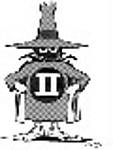This is a kit I picked up last week, an impulse buy without knowing exactly what was in the box but I guessed (correctly as it turned out) that it would be a re-issue of the old Esci kit.
Anyone who is familiar with the kit, will know exactly what to expect. For those who don't I'll take the opportunity to give a brief summary.
Panel detail is finely engraved and decently detailed for the scale and age of the tooling. Optional slatted and unslatted tailplanes, afterburner nozzles and inner wing pylons are provided to allow you to build either a C/D or J. At least that's the idea, but more on that in a later post. Still checking my references at the moment but I'm pretty sure only a C can be built.
Cockpit is basic. Instrument panel detail is on the decal sheet, ok given the scale and age but not what we're used to today. The seats are in three pieces each and are passable representations of Martin Baker 5/7 seats. Resin replacements are available from several AM sources if you want to replace these.
Stores are basic. Just outer fuel tanks, 4 AIM-7 Sparrows and 4 AIM-9 Sidewinders (I believe are supposed to be J's) and nothing else. Strangely they forgot about the centreline tank or a pylon for adding a gunpod or MER. The sparesbox will have to be raided to supply those and anything else you might want to hang off it.
There is also quite a bit of flash on the kit, especially inside the nose gear well and engine nozzles.
The box top claims to have markings for 5 aircraft, but only four are shown on the box. And only these four are included in the instruction sheet and decals. Despite this mistake the decals are beautifully printed and in perfect register with strong colours. Full stenciling for the airframe, pylons, tanks and missiles are given.
The kit is therefore a bit of a mixed bag. It's an oldie and is showing this in a few places. There are a few too many compromises to made to allow for a multi-version kit. The panel lines are clean and not overdone and a test fit shows that it should all fit with no fuss.
I am looking forward to building this kit and have already made a start. I'll be adding more photo's and updates as I go along which I hope will be of benefit to anyone thinking of buying or building the kit.
At the moment it's the only 1/72 F-4C currently available (unless anyone knows of any Fujimi kits around?) and is reasonably priced against it's competitors. I'll certainly be getting a couple more while I can. I can't help but think that Italeri have missed an opportunity to give us a new tooling early Phantom. Maybe Academy will scale down their 1/48 in the near future.
Stephen
















